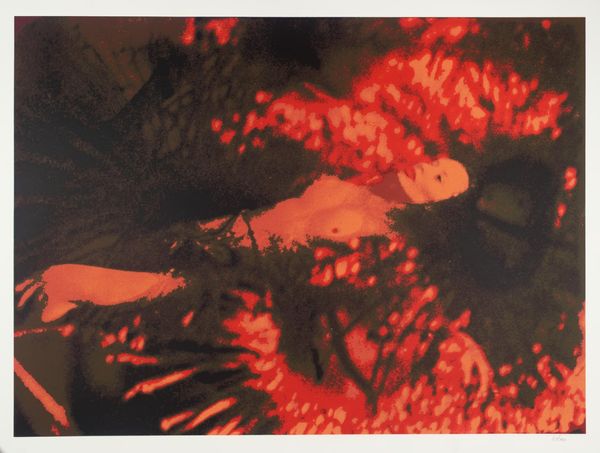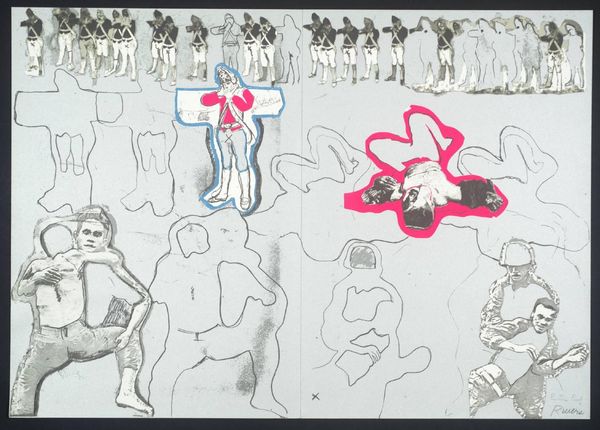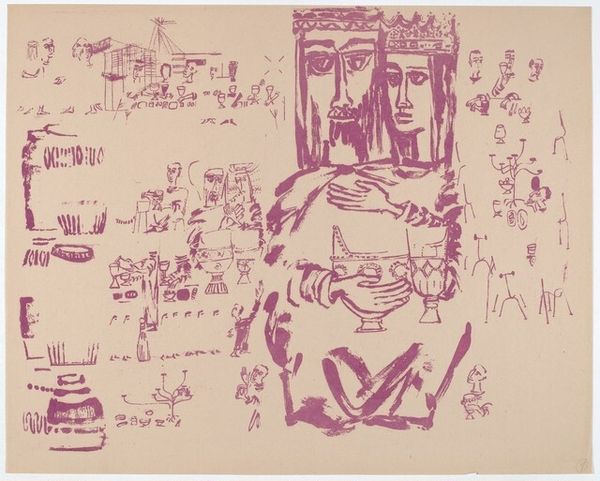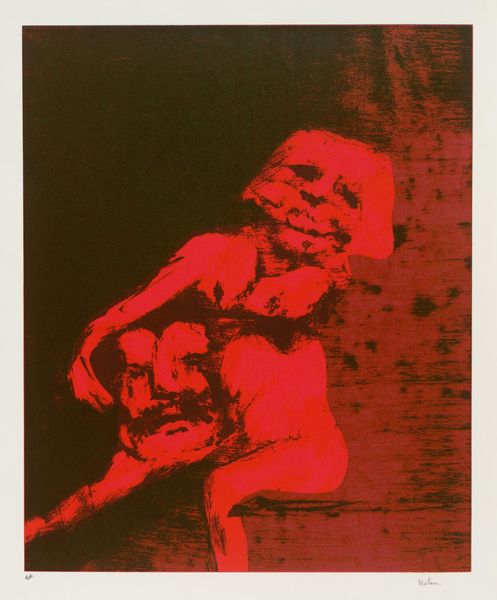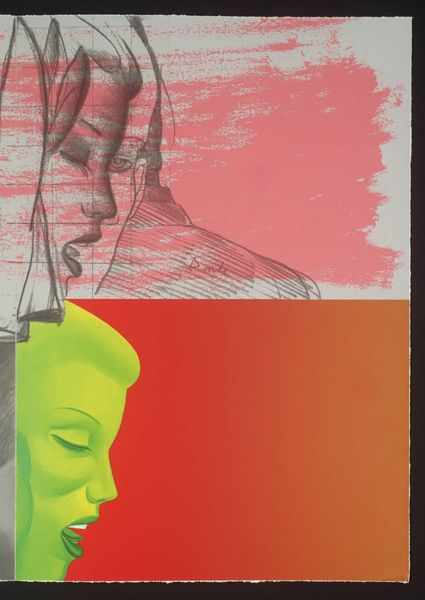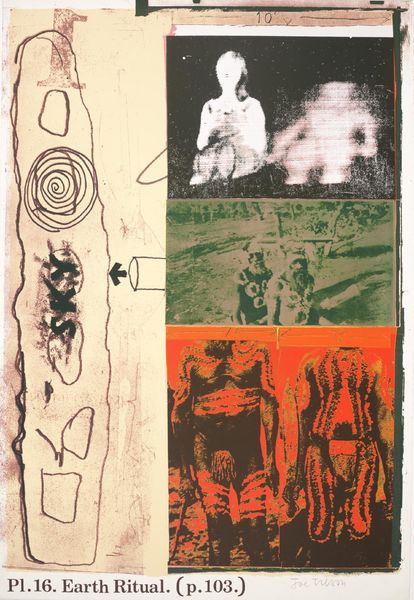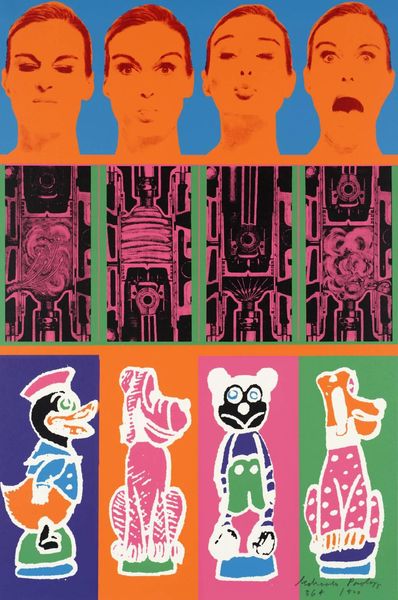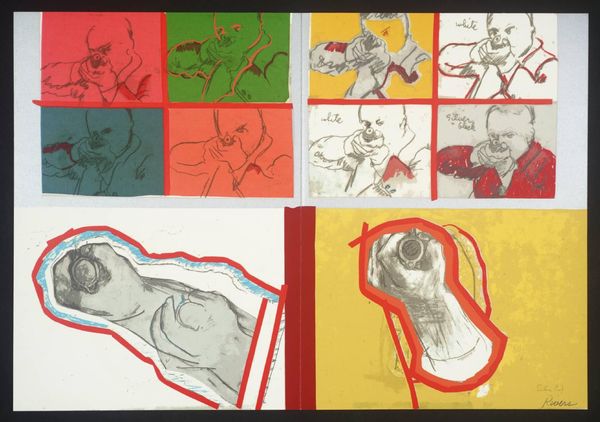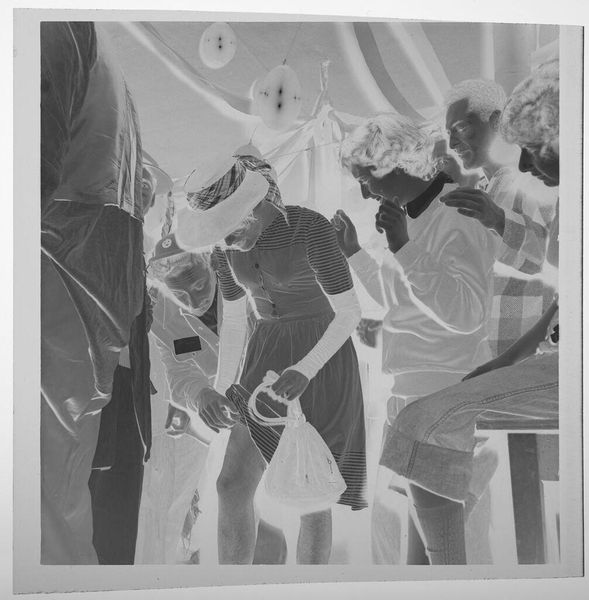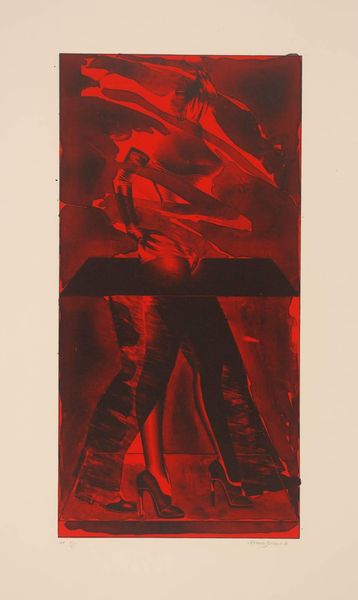
Dimensions: support: 1225 x 2050 mm
Copyright: © Paul Graham; courtesy Pace and Pace/MacGill Gallery, New York | CC-BY-NC-ND 4.0 DEED, Photo: Tate
Curator: Paul Graham's diptych, "Candy Wrapper, Tokyo/Kimono Pattern Flash Burn Photograph, Hiroshima," presents two seemingly unrelated images, each filling half of the 1225 x 2050 mm support. Editor: The jarring contrast is immediate. On the left, saccharine cartoon imagery; on the right, something… viscerally disturbing. The palette itself amplifies the discord. Curator: Exactly. Graham juxtaposes contemporary Japanese pop culture with the lingering effects of the atomic bombing. The right panel documents the patterns imprinted on a survivor's skin from their kimono. Editor: The tonal range is crucial here. The soft pinks and reds of the wrapper mirror the raw, burnt flesh, creating an unsettling visual echo. The composition reinforces this duality, dividing our attention and provoking a disquieting connection. Curator: Graham is forcing us to confront uncomfortable truths about memory, trauma, and the way societies choose to remember or, perhaps, forget. The banality of the everyday existing alongside historical horror. Editor: A powerful and deeply unsettling pairing. One leaves with a sense of profound unease regarding visual harmony and dissonance. Curator: Indeed, a potent commentary on the enduring impact of history on the present.
Comments
tate about 1 month ago
⋮
http://www.tate.org.uk/art/artworks/graham-candy-wrapper-tokyokimono-pattern-flash-burn-photograph-hiroshima-p77634
Join the conversation
Join millions of artists and users on Artera today and experience the ultimate creative platform.
tate about 1 month ago
⋮
In the 'Japanese series' of diptychs, Graham uses photography to document and explore how the past continues to assert itself in the present. Each work comprises an image taken from Japan's past with an image taken from her present. Here the photograph of a female Hiroshima victim is one of several famous and emotive images from the Second World War. The pattern of the burns reflects the fabric of the victim's kimono, traditional symbol of Japanese femininity. This image is in striking contrast to the happy-go-lucky image of a young girl taken from a piece of wrapping paper which itself reflects the invasion of the American-influenced commercial world. Gallery label, September 2004
